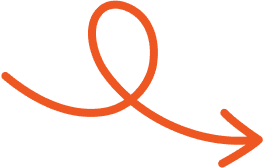Jul 7, 2025
LinkedIn Follow vs Connect: Key Differences Explained
Learn the difference between LinkedIn's connect and follow features to grow your network effectively and stay aligned with your goals.
Deciding between connecting or following someone on LinkedIn can shape how you build your professional presence. Both features offer value, but they serve different purposes. One opens the door to mutual engagement, while the other keeps you in the loop without making things official.
Knowing when to connect and when to follow helps you grow smarter relationships, keep your feed relevant, and stay aligned with your networking goals. It’s all about using the platform in a way that works for your personal brand and professional journey. Keep reading to learn when to use each option and how it can support your growth.
Understanding LinkedIn Follow Vs Connect
LinkedIn provides two distinct networking options: Follow and Connect. These features offer unique ways to engage with professionals and expand your influence on the platform.
What Does It Mean To Follow On LinkedIn?
Following on LinkedIn enables you to view someone’s public updates, such as posts, articles, or shared content, without creating a mutual relationship. This is a one-way interaction, making it ideal for keeping up with thought leaders, influencers, and professionals in your industry.
Since you don't exchange private access or messages, this option maintains professional boundaries while still allowing you to benefit from valuable insights. Following also applies to companies, providing updates on their activities and announcements.
What Does It Mean To Connect On LinkedIn?
Connecting entails building a two-way professional relationship. When accepted, both parties gain access to each other’s shared content and updates. Unlike following, connections allow private messaging, fostering direct engagement.
This feature is commonly reserved for colleagues, acquaintances, or individuals you want to collaborate with more closely. By connecting, you also gain indirect access to their network, which broadens your exposure and facilitates deeper networking opportunities.
Key Differences Between Follow And Connect
Understanding the distinct functionalities of LinkedIn's Follow and Connect options allows you to tailor your networking strategy effectively. Each feature serves different purposes, offering unique advantages in visibility, engagement, and privacy.
Visibility And Accessibility
Following someone on LinkedIn is a one-way interaction, letting you see their public posts and updates without granting them access to your activity or profile. This approach suits keeping up with industry leaders, influencers, or companies while maintaining professional distance.
Unlike following, connecting creates a two-way relationship where both users can view each other's full profiles, updates, and activity. By connecting, you gain mutual access, benefiting from deeper engagement and extended network visibility.
Networking And Engagement
Following enhances content consumption, enabling you to engage through likes, shares, and comments on public posts without direct messaging access. It allows for passive interaction, focusing on learning from professionals and staying informed about trends.
Connecting, on the other hand, promotes active networking by enabling private messages, endorsements, and introductions via mutual connections. This makes connecting more effective for fostering relationships, professional growth, and collaborative opportunities while broadening your active network.
Privacy Settings And Permissions
Following doesn't require approval, keeping the interaction discreet while offering limited access to public activity. It's an optimal choice for maintaining privacy while observing another's insights and updates.
Connecting requires the recipient's acceptance, granting them visibility into your full profile and LinkedIn activity. This mutual acknowledgment strengthens professional ties but reduces privacy compared to following. By understanding these distinctions, you can decide whether to prioritize reaching a broader audience or cultivating deeper professional relationships.
Pros And Cons Of Following On LinkedIn
Following on LinkedIn is an effective way to stay informed and gain insights without direct engagement. It suits professionals looking to consume industry-relevant content while maintaining a discreet presence.
Benefits Of Following
Following provides unrestricted access to public posts and updates from leaders, experts, and organizations, offering valuable learning opportunities. You can maintain a professional presence by engaging indirectly, such as liking or commenting on posts, without needing mutual connections.
There’s no upper limit on the number of people you follow, enabling wide access to updates. This feature is ideal for monitoring trends, keeping up with experts, and building a foundation for future professional relationships, all while ensuring discretion.
Limitations Of Following
Following doesn’t allow direct messaging with the followed user unless you connect. You’ll miss out on enhanced profile visibility and comprehensive content access that connections provide. This one-sided interaction limits opportunities for networking and building deeper relationships.
The user you follow typically won’t see your activity or updates, reducing mutual engagement potential. So, following is more passive compared to the enriched professional collaboration that connecting fosters.
Pros And Cons Of Connecting On LinkedIn
Connecting on LinkedIn initiates a two-way, mutually beneficial relationship. It grants full profile access and enables private interactions, making it ideal for building meaningful professional relationships.
Advantages Of Connecting
Establishing connections expands your professional network, increasing visibility and opportunities. It allows access to complete profiles, helping you understand a person's skills, experience, and interests.
Connections support direct communication through messaging without needing InMail, fostering stronger interactions. You can also engage in collaborations by requesting endorsements or recommendations, which enhance professional credibility. This level of interaction promotes trust and long-term networking success.
Drawbacks Of Connecting
The mutual nature of connections can reduce privacy since your profile details and activity become fully visible. The 30,000-connection cap limits network size, which may restrict growth over time as your professional goals evolve.
Connecting indiscriminately dilutes the quality of your network, introducing irrelevant content and increased spam messages. Also, the need for approval may result in declined requests, slowing relationship-building, especially if outreach is impersonal or unaligned with mutual interests.
Choosing The Right Approach Based On Your Goals
Selecting between LinkedIn's Follow and Connect features depends on what you aim to achieve in your professional journey. Each option serves specific purposes, helping you either build meaningful relationships or broaden your content visibility.
For Professional Networking
Connecting is the preferred choice when expanding your professional relationships. This feature establishes mutual access to profiles and updates. It fosters collaboration through direct messaging and personalized engagement.
For example, connecting with potential employers or colleagues can lead to job opportunities or partnerships. Though connections are limited to 30,000, their depth can strengthen your network's quality. Leveraging this approach aligns with career-focused objectives, making it a powerful method for developing meaningful professional ties within your industry.
For Personal Branding
Following suits those focusing on growing their online presence. It allows engagement with industry leaders and influencers without a commitment to direct interaction. For instance, if you're a thought leader, enabling followers increases the reach of your content to unlimited users.
This approach balances professional visibility and exclusivity. By following others, you stay informed about industry insights, trends, and best practices. Whether you're building personal authority or cultivating a professional audience, following enhances content reach and aligns with branding goals effectively.
Conclusion
Understanding when to follow and when to connect on LinkedIn can significantly enhance your networking strategy. Both options serve unique purposes, and choosing the right one depends on your professional goals and the level of engagement you seek.
By leveraging these features effectively, you can build meaningful relationships, stay informed on industry trends, and expand your visibility. Whether you're aiming for collaboration or simply consuming valuable content, aligning your approach with your objectives will help you maximize LinkedIn's potential. And if you're looking for a smarter way to write, schedule, and optimize posts on LinkedIn, tools like Typoro can make the process easier and more impactful.
Start Your 7-Day Free Trial
Experience the full power of Typoro with a 7-day free trial. Create, optimize, and schedule LinkedIn posts effortlessly while tracking your growth. No commitment. Cancel anytime.
Credit card required. Cancel at anytime.









